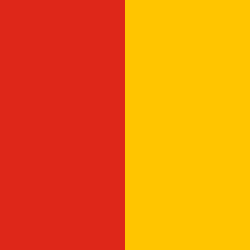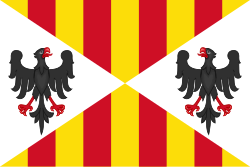1200
| 2. tisíciletí |
◄◄ ◄ 1196 • 1197 • 1198 • 1199 • 1200 • 1201 • 1202 • 1203 • 1204 ► ►►
1200 (MCC) byl přestupný rok, který dle juliánského kalendáře započal sobotou.
Události
- Filip II. August zrušil na nátlak papeže svůj nelegitimní sňatek s Anežkou Meránskou a přijal zpět ke dvoru manželku Ingeborg Dánskou
- v Krušných horách zahájena těžba cínové rudy
- kanonizace Kunhuty Lucemburské
Narození
- Česko
- ? – Kunhuta Štaufská, česká královna, manželka Václava I. († 13. září 1248)
- Svět
- 19. ledna – Dógen Zendži, japonský zenový mistr († 22. září 1253)
- 28. října – Ludvík IV. Durynský, durynský lantkrabě, saský falckrabě, říšský maršálek a účastník křížové výpravy († 11. září 1227)
- ? – Filip Hurepel, bratr francouzského krále Filipa Augusta († leden 1234)
- ? – Pierre de Montereau, stavitel působící v okolí Paříže († 17. března 1266)
- ? – Matthew Paris, anglický benediktinský mnich, kronikář, iluminátor a kartograf († 1259)
- ? – Ulrich von Liechtenstein, štýrský šlechtic a básník († 26. ledna 1275)
- ? – Guillaume de Lorris, středověký francouzský básník († 1238)
- ? – Hugolin z Gualdo Cattaneo, italský augustiniánský poustevník, blahoslavený († 1. ledna 1260)
- ? – Tomáš z Celana, italský řeholník, básník a spisovatel († 1265)
- ? – Eusebius z Ostřihomi, uherský kněz, blahoslavený († 20. ledna 1270)
Úmrtí
- Česko
- 8. dubna – Vojtěch III. Salcburský, třetí syn českého krále Vladislava II., salcburský arcibiskup (* 1145)
- ? – Svatopluk Jemnický, kníže brněnského (respektive jemnického) údělu (* ?)
- Svět
- 23. dubna – Ču Si, čínský filosof, představitel neokonfuciánské školy, završitel neokonfuciánské scholastiky (* 1130)
- 17. září – Kuang-cung, čínský císař říše Sung (* 30. září 1147)
Hlavy států
Podrobnější informace naleznete v článku Seznam hlav států v roce 1200.
Evropa
Na území dnešní ČR
 České království – Přemysl Otakar I.
České království – Přemysl Otakar I. Moravské markrabství – Vladislav Jindřich
Moravské markrabství – Vladislav Jindřich Vratislavské knížectví – Boleslav I. Vysoký
Vratislavské knížectví – Boleslav I. Vysoký
Ostatní
 Anglické království – Jan Bezzemek
Anglické království – Jan Bezzemek Skotské království – Vilém I. Skotský
Skotské království – Vilém I. Skotský Svatá říše římská – Ota IV. Brunšvický, po jeho smrti Filip Švábský
Svatá říše římská – Ota IV. Brunšvický, po jeho smrti Filip Švábský Papežský stát – Inocenc III.
Papežský stát – Inocenc III. Francouzské království – Filip II. August
Francouzské království – Filip II. August Uherské království – Emerich Uherský
Uherské království – Emerich Uherský Sicilské království – Fridrich I. Štaufský
Sicilské království – Fridrich I. Štaufský Kastilské království – Alfonso VIII. Kastilský
Kastilské království – Alfonso VIII. Kastilský Polské knížectví – Měšek III. Starý
Polské knížectví – Měšek III. Starý Rakouské vévodství – Leopold VI. Babenberský
Rakouské vévodství – Leopold VI. Babenberský Druhá Bulharská říše – Kalojan
Druhá Bulharská říše – Kalojan- Bosenský banát – Emerich Uherský
Blízký východ a Severní Afrika
 Byzantská říše – Alexios III. Angelos
Byzantská říše – Alexios III. Angelos Rúmský sultanát – Sulejman II. Rúmský
Rúmský sultanát – Sulejman II. Rúmský
Dálný východ a Asie
- Chórezmská říše – Aláuddín Tekiš, po jeho smrti Aláuddín Muhammad
- Nizárijsko-ismáílitský stát – Muhammad II. Alamut
 Čínské císařství – Dynastie Jižní Sung
Čínské císařství – Dynastie Jižní Sung Japonské císařství – Cučimikado
Japonské císařství – Cučimikado
Externí odkazy
 Obrázky, zvuky či videa k tématu 1200 na Wikimedia Commons
Obrázky, zvuky či videa k tématu 1200 na Wikimedia Commons
Média použitá na této stránce
Royal Banner of the Kingdom of Castile (Variant).svg
Autor: Heralder, Licence: CC BY-SA 3.0
Royal Standard of the Kingdom of Castile
Autor: Heralder, Licence: CC BY-SA 3.0
Royal Standard of the Kingdom of Castile
Royal Standard of the King of France.svg
Autor: Sodacan, Licence: CC BY-SA 3.0
Královská standarda francouzského krále (používaný jako státní vlajka Francouzským královstvím v období absolutní monarchie). Používaná byla v letech 1638 až 1790.
Autor: Sodacan, Licence: CC BY-SA 3.0
Královská standarda francouzského krále (používaný jako státní vlajka Francouzským královstvím v období absolutní monarchie). Používaná byla v letech 1638 až 1790.
Flag of Hungary (1915-1918, 1919-1946).svg
Flag of Hungary from 6 November 1915 to 29 November 1918 and from August 1919 until mid/late 1946.
Flag of Hungary from 6 November 1915 to 29 November 1918 and from August 1919 until mid/late 1946.
Flag of the Second Bulgarian Empire.svg
Autor: Samhanin, Licence: CC0
Flag of the Second Bulgarian Empire (Ivan Shishman of Bulgaria Era, 1380). as shown in the Guillem Soler.
Autor: Samhanin, Licence: CC0
Flag of the Second Bulgarian Empire (Ivan Shishman of Bulgaria Era, 1380). as shown in the Guillem Soler.
POL powiat brzeski (województwo opolskie) flag.svg
Flaga powiatu brzeskiego w województwie opolskim.
Flaga powiatu brzeskiego w województwie opolskim.
Flag of the Papal States (pre 1808).svg
Flag of the Papal States before 1808.
Flag of the Papal States before 1808.
Banner of the Holy Roman Emperor with haloes (1400-1806).svg
Autor: David Liuzzo, eagle by N3MO, Licence: CC BY-SA 3.0
Banner of the Holy Roman Empire, double headed eagle with halos (1400-1806)
Autor: David Liuzzo, eagle by N3MO, Licence: CC BY-SA 3.0
Banner of the Holy Roman Empire, double headed eagle with halos (1400-1806)
Flag of Japan (1870–1999).svg
Variant version of a flag of Japan, used between January 27, 1870 and August 13, 1999 (aspect ratio 7:10).
Variant version of a flag of Japan, used between January 27, 1870 and August 13, 1999 (aspect ratio 7:10).
Golden Greek cross and discs of the Byzantine Empire.png
Autor: Dragovit, Licence: CC BY-SA 4.0
This image represents an early form of the byzantine tetragrammatic cross or the symbol preceding it, depicted in traditional colors golden on a red background. According to the historian A. Babuin, the images of flags with crosses quartered with golden discs survive from the 10th century, and a depiction of a flag almost identical to the Palaiologan design is known from the early 13th century. This image can be considered a possible reconstruction and can be used in some articles and templates as a flag or symbol of the Byzantine Empire, but beware, this image is highly speculative and its use should be avoided in infoboxes and articles, where it could be presented as a historical state insignia.
Autor: Dragovit, Licence: CC BY-SA 4.0
This image represents an early form of the byzantine tetragrammatic cross or the symbol preceding it, depicted in traditional colors golden on a red background. According to the historian A. Babuin, the images of flags with crosses quartered with golden discs survive from the 10th century, and a depiction of a flag almost identical to the Palaiologan design is known from the early 13th century. This image can be considered a possible reconstruction and can be used in some articles and templates as a flag or symbol of the Byzantine Empire, but beware, this image is highly speculative and its use should be avoided in infoboxes and articles, where it could be presented as a historical state insignia.
Flag of the Margraviate of Moravia.png
Autor: Dragovit, sources: Moravská orlice s klenotem.jpg (the eagle delivered from), Licence: CC BY-SA 4.0
Heraldická vlajka Moravského markrabství a moravských markrabat.
Autor: Dragovit, sources: Moravská orlice s klenotem.jpg (the eagle delivered from), Licence: CC BY-SA 4.0
Heraldická vlajka Moravského markrabství a moravských markrabat.
Bandiera del Regno di Sicilia 4.svg
Při zobrazení tohoto souboru lze snadno přidat orámování
Při zobrazení tohoto souboru lze snadno přidat orámování
Flag of Sultanate of Rum.svg
Autor: Demircan Yiğit Öney, Licence: CC BY-SA 4.0
"Flag of the Sultanate of Rum", modified version of a design by Akib Özbek (1969) [In the original design, the bow is arranged so that the arrow lies horizontally]
Autor: Demircan Yiğit Öney, Licence: CC BY-SA 4.0
"Flag of the Sultanate of Rum", modified version of a design by Akib Özbek (1969) [In the original design, the bow is arranged so that the arrow lies horizontally]
- "The alleged flag of the Great Seljuk Empire is blue with a white winged and double-headed silhouette and a black bow and arrow." (Ivan Sache & Thomas Robinson, 4 July 2004)
Flag of Austria (1-1).png
Autor: Bundesministerium für Landesverteidigung, Licence: CC BY-SA 3.0
Flag of Austria; Version with 1:1 ratio.
Autor: Bundesministerium für Landesverteidigung, Licence: CC BY-SA 3.0
Flag of Austria; Version with 1:1 ratio.

















